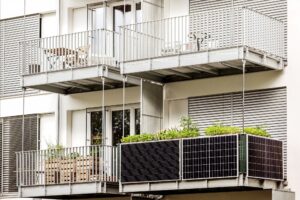James Lee is a professor of atmospheric chemistry at the University of York. His research focuses on the formation, transformation and removal of aerosols in the atmosphere.
Lee works in the Wolfson Atmospheric Chemistry Laboratories (WACL) which was established in 2013 as the first lab of its kind in the UK. Air Quality News got in touch with Lee to learn a bit more about his research.
At the time of our conversation, Professor Lee has just returned from a field trip where he was using the UK’s largest atmospheric research aircraft to look at air pollution in the remote environments of Cape Verde.
‘We have been looking at the emissions that come off Africa, dust from the desert, biomass burning from the forest, to understand how that mixes with urban air pollutants and what it does to the air that comes off Africa,’ he says.
‘Ultimately, this can affect the air quality in Europe which is important because if the air coming into the UK is polluted then it makes it harder for us to control our own emissions.
Previously, Prof Lee has spent a lot of time researching air pollution in the mega-cities of Beijing and Dheli.
He has been part of a large project, involving ten UK and four Chinese institutions who have been looking at the emissions in these cities in order to model what might happen in the future.
‘The thing we are trying to understand is the main factors controlling air pollution in these cities, said Lee.
‘We’ve developed techniques to directly measure the emissions of the compounds, not just their concentrations, but how much is emitted, so that we can compare the estimates that go into prediction models.
‘We are trying to improve the estimate models so we can improve the forecasting of what will happen in the future in terms of air pollution.’
It might be a surprise to some people that reducing air pollution can come with its own negative consequences, as Prof Lee explains.
‘In a city like Delhi, if you reduce the particulates, which from a health perspective is what we want to do, you can end up with more sunlight, and sunlight causes the production of other pollutants.
‘We want to understand the fundamental chemical processes so that we can predict what might happen as sunlight increases because of particulate decrease.
‘It’s analogous with the diesel gate, diesel vehicles were encouraged for their apparent carbon reductions, but their increased pollution levels were not understood, or were ignored.
‘By looking ahead, we want to ensure that this doesn’t happen again.’
Previously, Prof Lee has also been involved in research using the atmospheric aircraft to calculate how much nitrogen dioxide (NO2) is being emitted from the surface in London.
‘The UK has a 1km grid square emission estimates across the whole country, and that’s done as a paper exercise based on how many cars, buildings, and power stations there are.
‘We are using our research to validate these emission estimates to make sure that they have some resemblance and reality about them.’
According to Lee, there were various discrepancies with their findings and the emission estimates, which he says was largely to do with diesel vehicles emitting more NO2 than they’re supposed to emit according to the manufacturing.
‘In a couple of months, we’re going back to the BT tower to start these measurements again, it will be interesting to see how these measurements have changed with the ULEZ and better vehicle technologies,’ he says.
When asked about York’s approach to air pollution with the proposal made last December (2019) to ban cars from the city centre, Lee says there is ‘something very forward-thinking about it.’
‘There are various problems in York, it’s an old city, with narrow streets and a relatively old bus fleet.
‘York has some interesting ideas, but as always, they must be careful of any unintended consequences.
‘A blanket ban on vehicles on certain streets could just push the vehicles elsewhere, you might clean up a bit of the city, but you also might make other parts worse.’
Lee argued that the focus must be on improving York’s public transport system, to make public transport the easiest and cleanest option.
‘Buses are one of the biggest polluters. The car ban should go alongside a strategy to improve public transport.
‘It will be interesting to see how this all plays out, I think cities are currently waiting on other cities to make the first move so they can see how it all works out for them.’
Photo Credit – Professor James Lee

















Leave a Reply